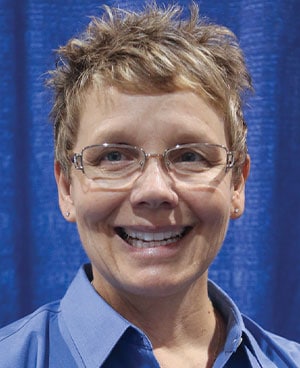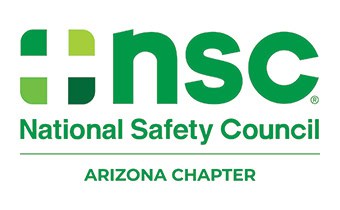
JoAnn Dankert is seasoned safety and health professional with over 35 years of experience across multiple industries, including chemical, distribution, electronics, food, pharmaceutical, and R&D. As a senior consultant for the National Safety Council (NSC) based in Arizona, she specializes in helping businesses integrate safety and health practices into their operations. Jo Ann is a Certified Safety Professional (CSP), Associate Safety Professional (ASP), Certified Instructional Trainer (CIT), and Certified Hazardous Materials Manager (CHMM).
With nearly 40 years in workplace safety, JoAnn Dankert has seen it all — breaking barriers as a woman in the field, training the next generation, and embracing technology to improve safety practices. Here’s what she’s learned along the way.
What inspired you to pursue a career in safety?
Someone I worked with in college suggested occupational safety. I took a few safety classes and got A’s in them. One of the safety class instructors became my academic adviser and showed me how quickly I could graduate with a degree in S&H. Remember: In 1986, when I graduated, OSHA was only about 15 years old. I was in!
Can you share a defining moment in your career that reinforced your passion for workplace safety?
As an intern, I worked with a lot of people on the shop floor who I realized were a lot like my mom and dad, who both worked in factories — my dad in quality control at a Harley-Davidson engine plant and my mom making catalytic converters on the line at GM. It was as though all these workers were a part of my family and I was protecting them from harm.
What challenges have you faced as a woman in the safety industry, and how have you overcome them?
Early in my career, at the National Safety Council, I was often the youngest person in the room, as well as the only woman. Both were sometimes obstacles. Once I was able to talk with workers as though I were one of them, they began to accept me, because I was willing to learn from them. Management was harder to win over because they seemed reluctant to take recommendations from a woman.
I got a great piece of advice from a male mentor early in my career. He said I should sit at a different lunch table every day. So, I did. I mixed it up, sometimes with hourly workers and other times with supervisors and managers. Once people got to know me as a person, I was more accepted as a safety professional. To this day, I still read Sports Illustrated because using sports as a conversation starter helped me join the group.
I was also lucky to work for Fortune 500 companies early in my career, and they didn’t tolerate harassment. I won’t pretend that I didn’t benefit from being a minority hire – but I also worked hard to show that they didn’t make a mistake in hiring me.
How has the industry evolved since you started, particularly for women in safety roles?
When I started, it was a bunch of old white guys running safety departments. Women in safety were mostly on the industrial hygiene side – the health part of S&H. Now, we see more women and minorities in S&H in general – even in traditionally male-dominated industries like construction and mining. This is good because workers need to feel comfortable before raising a safety concern.
What’s one misconception people have about the safety field?
That an organization has do safety because of OSHA. Yes, smaller businesses with fewer resources still think that way. But fewer companies think that way as they begin to see how integrating S&H into their operations can save money, increase quality and productivity, and retain workers in the long run — as opposed to paying out a lot of money in worker’s compensation cases.
Are there any safety initiatives or programs you’re particularly proud of leading or contributing to?
I spend the bulk of my time training the next generation – which is so important to the protection of our existing workforce and organizations. It’s hard to believe that I’ve spent almost 40 years doing this! (I’m a pretty good trainer.)
What role do women play in shaping the future of safety and health standards?
Shaping the workplace violence standards, especially in healthcare and retail. OSHA in California is already has standards in place, and federal OSHA is looking closely at this too.
Have you mentored other women in this field? Yes. If so, what advice do you give them?
Know your stuff and be technically sound. “Teach people how to fish” by helping them develop safety skills so they have another tool in their toolbox for overall success. Don’t be the compliance cop – explain the why.
How can workplaces do better at encouraging more women to pursue careers in safety?
The S&H profession needs let people know that this profession exists. S&H pros are retiring. In general, we need new blood with new skills and ideas. In other words, younger generations can bring their tech savvy to streamline older, tired programs.
What trends or innovations in safety excite you the most?
Exoskeletons for ergonomics; AI for data crunching; use of technology, as opposed to paper forms, for gathering information; VR technology is getting cheaper and easier for use in training.
What advice would you give to young women considering a career in safety?
Try it out – shadow someone. See if you like it. It’s a people business; you must get out from behind the desk and be in the field with workers, who are your customers. Would you be comfortable with that?
How do you see the role of women in safety evolving in the next decade?
Helping shed light on female health concerns, such as chemical usage during child-bearing years. This could affect men, too, but we don’t connect it like we would with a working pregnant woman. We are just now focusing on building PPE that fits women better.
What’s one piece of safety wisdom you think everyone — regardless of their job — should know?
Be a lifelong learner. Standards change. Technology changes. For example, when I started in S&H, we weren’t using computers (and I didn’t want to learn how to use a computer!). Now we have AI. We must adapt to work smarter and survive in the profession.
